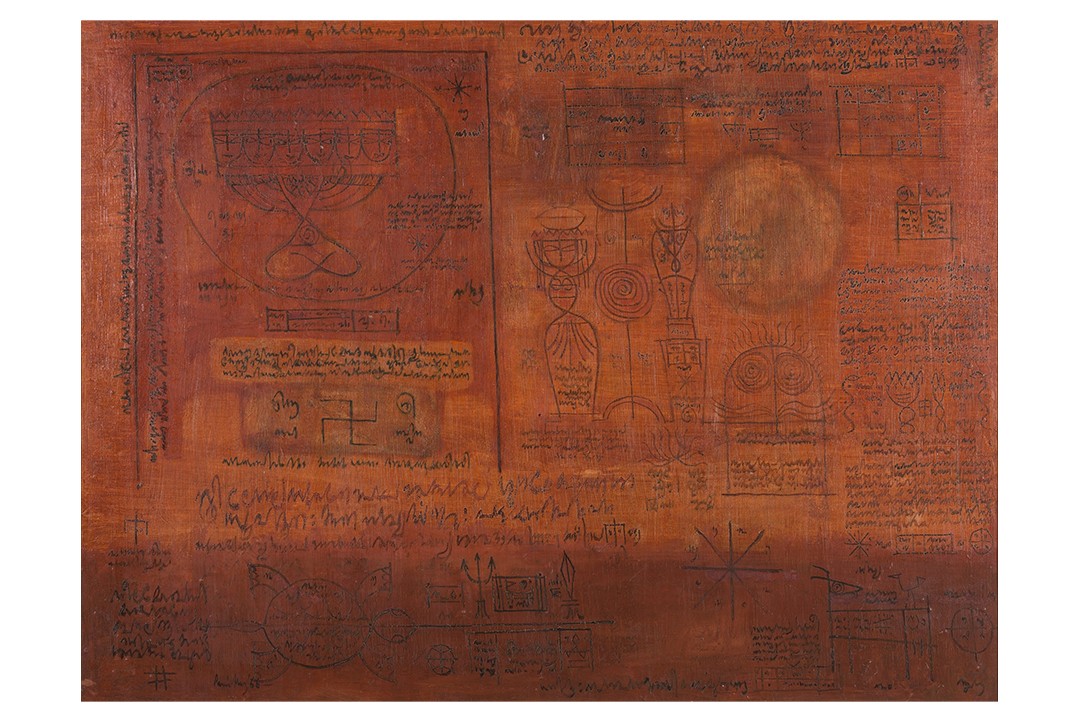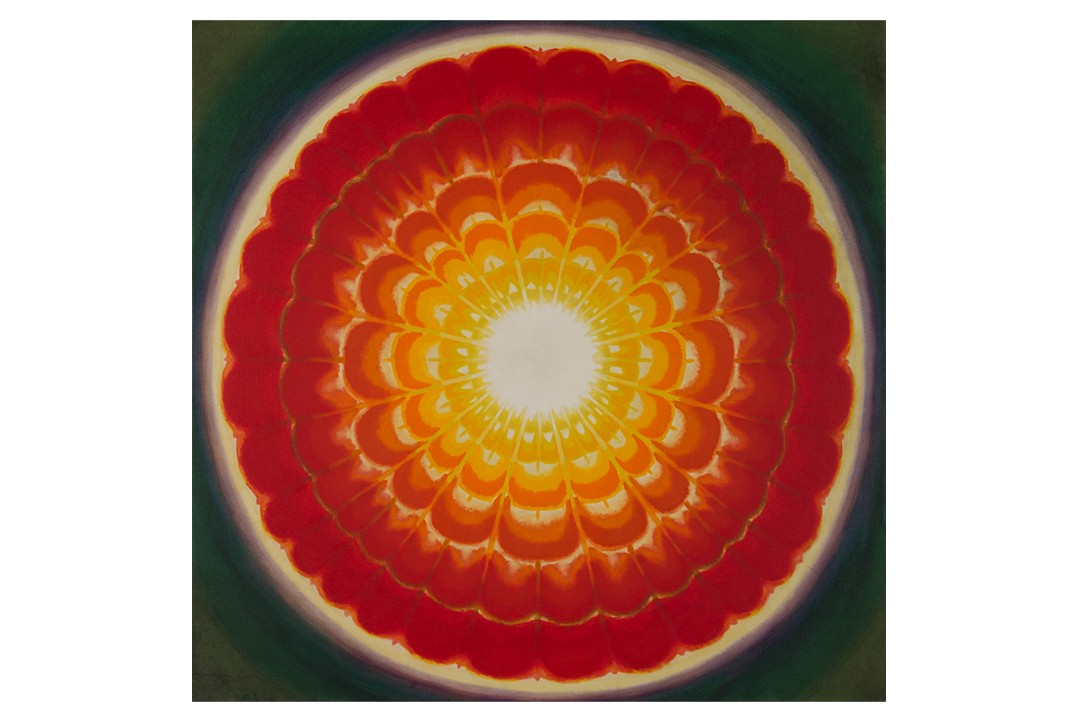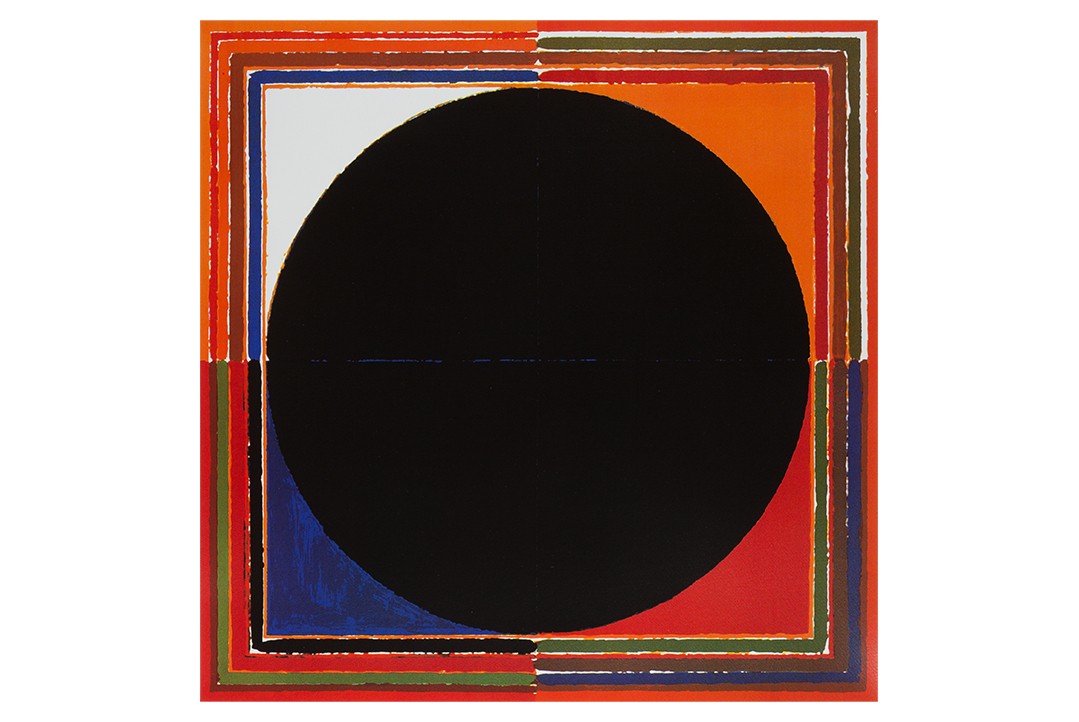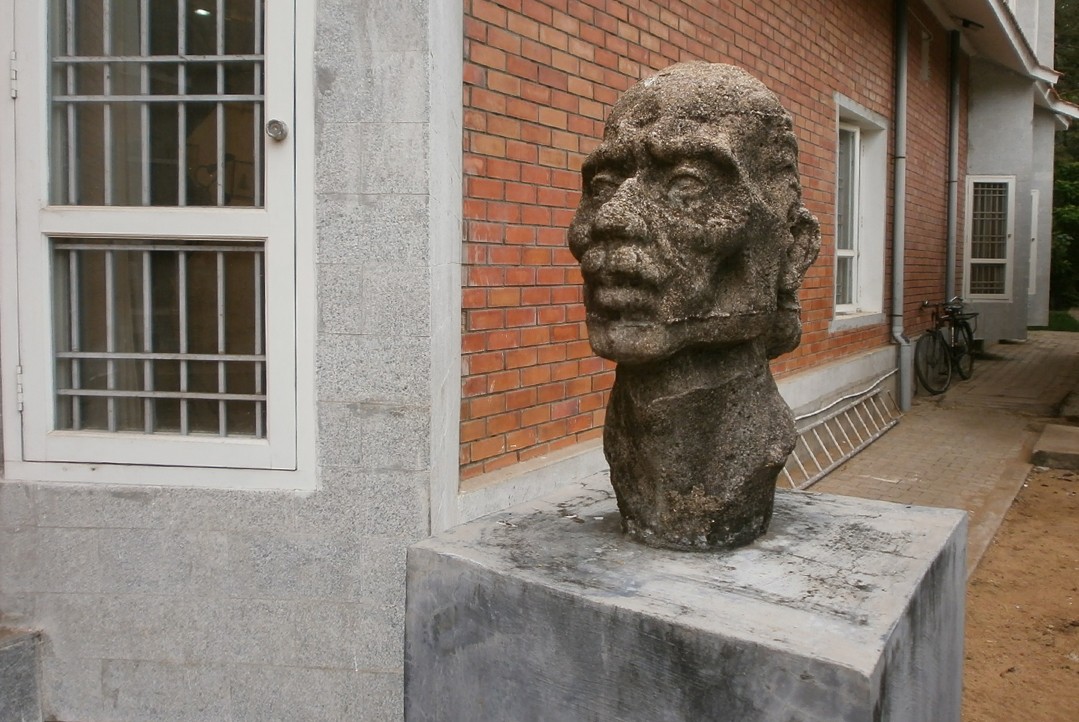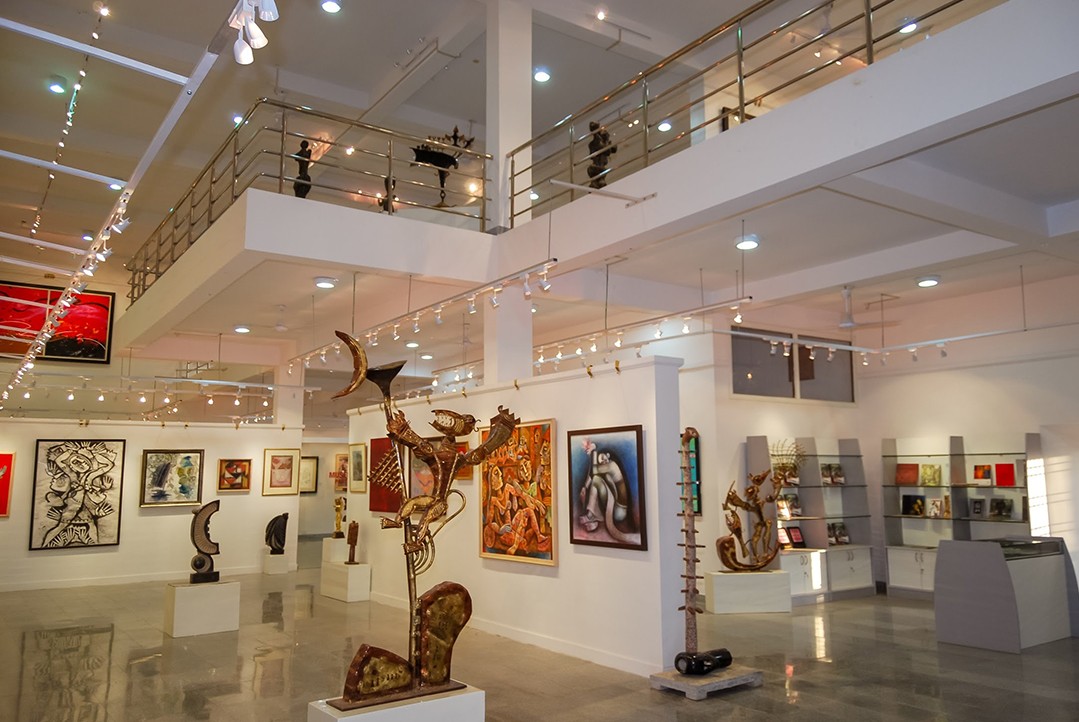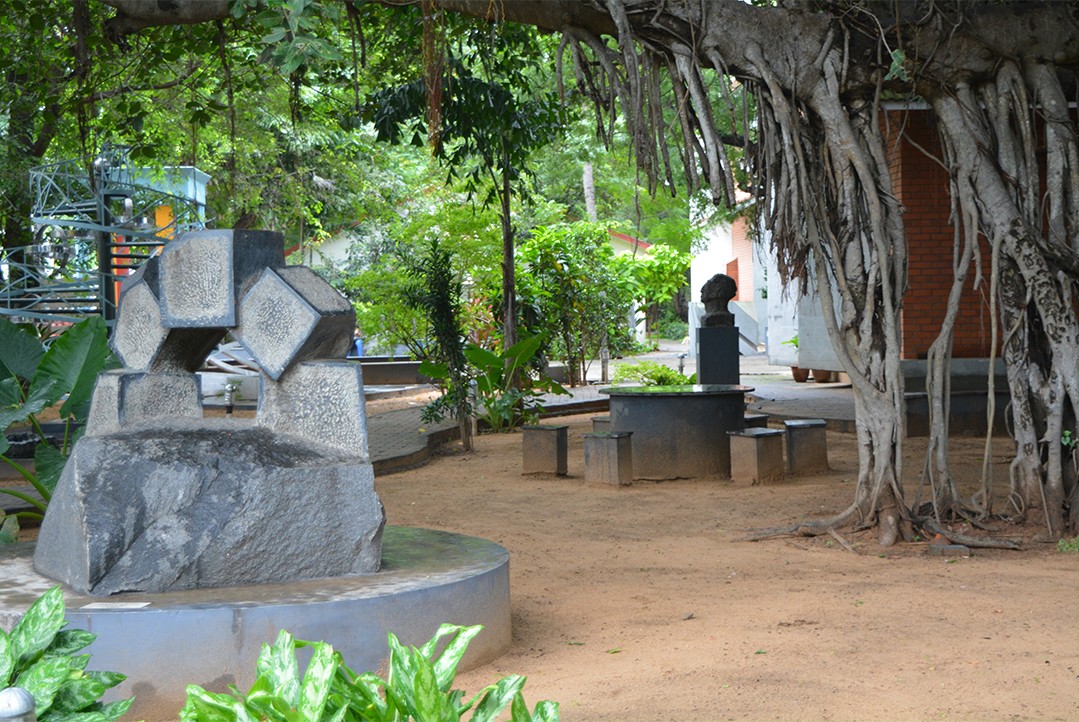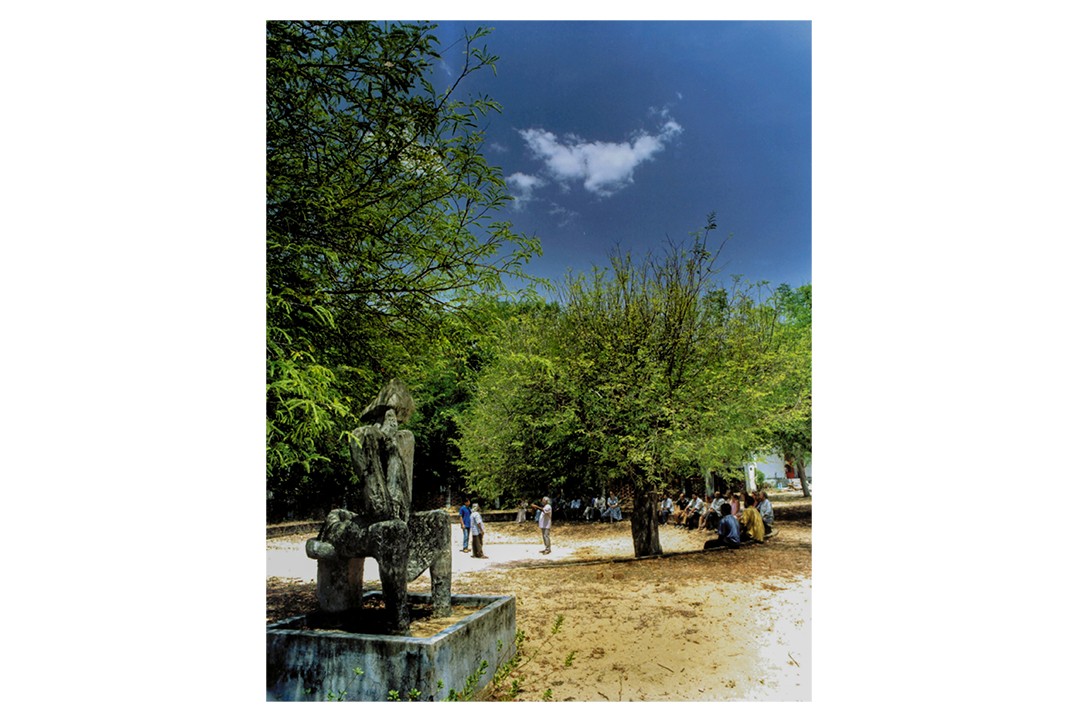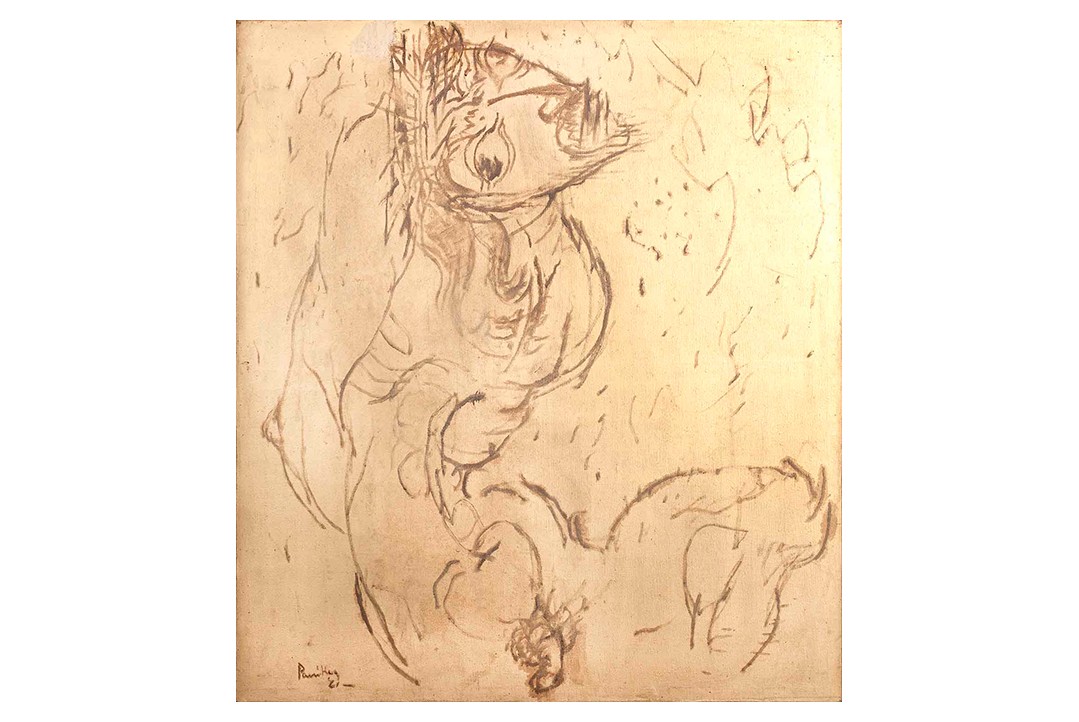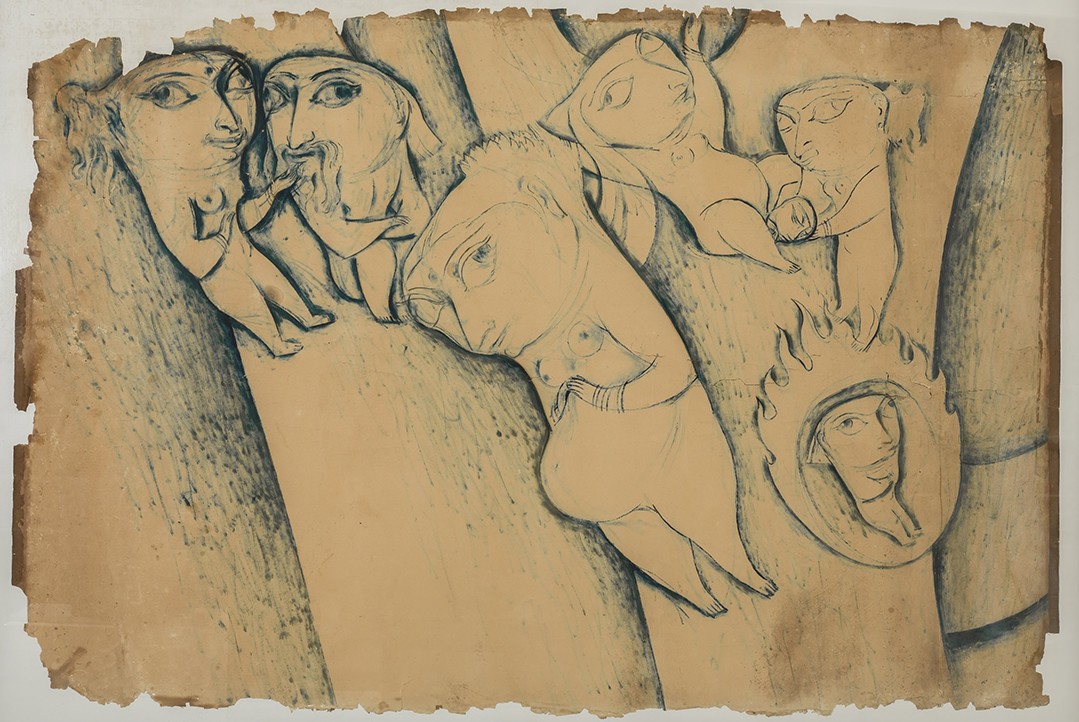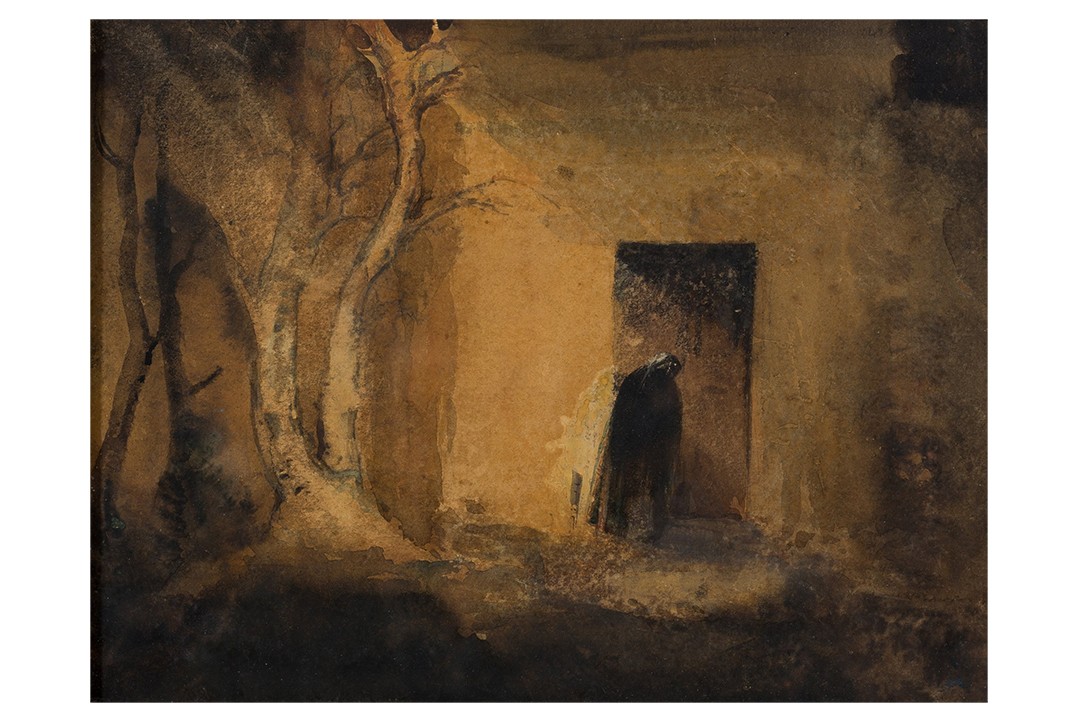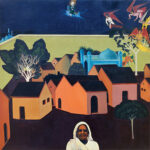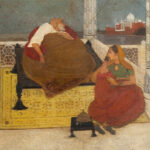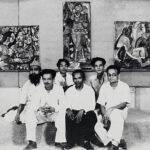Neo-Tantric Art Sees the Reclamation of Tradition
1962–1980
Members of the Madras Art Movement and the short-lived but influential Group 1890 move towards Abstraction and Neo-Tantrism, drawing upon regional folklore, mythology, scriptures, sacred geometry and iconography, and Indigenous art forms. Neo-Tantric art, which takes shape in the early 1960s, is conceived as a form of abstraction supported by traditional ideas and art practices, distinguishing itself from Western Abstract Expressionism. Both these groups also deliberately distance themselves from European Modernist styles which have, by this point, become internationalist trends. In their view, such an influence is only a new, hegemonic successor to the colonial imposition of Academic Realism.
KCS Paniker emerges as a key figure in the conversation around tradition and Modernism, spearheading the Madras Art Movement and founding the Cholamandal Artists’ Village near Madras (present-day Chennai) as a space where those who emerge from an academic background in the arts can engage with local artisans and traditions. The manifesto of Group 1890 further stresses a break from what they see as problematic movements in Indian art history, such as the nationalistic Revivalism of the Bengal School and the West-inspired Modernism of the Bombay Progressive Artists’ Group.
Bibliography
Group 1890. “Outline Draft for the Art Centre of the Group 1890.” 1962.
Mago, Pran Nath. Contemporary Art in India: A Perspective. New Delhi: National Book Trust 2001. https://criticalcollective.in/ArtistGInner.aspx?Aid=197.
Sheikh, Gulammohammed. Contemporary Art in Baroda. New Delhi: Tulika Books, 1997.
Feedback 
This entry appears in
Art in South Asia
Visit Timeline
Associated Timeline Events
First Published: March 11, 2024
Last Updated: August 17, 2024



